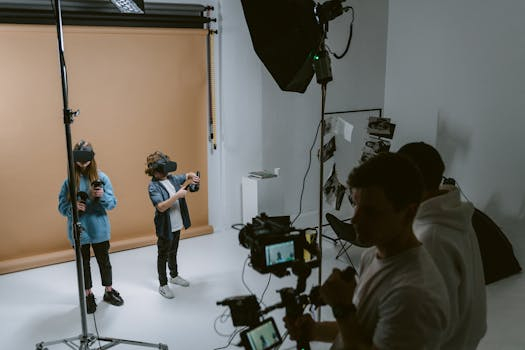Haptic Feedback: Adding Touch to Virtual Experiences
In recent years, virtual reality technology has advanced by leaps and bounds. We can now immerse ourselves in simulated worlds and interact with digital environments like never before. However, there has always been something missing from these virtual experiences: the sense of touch. That’s where haptic feedback comes in. This groundbreaking technology allows us to truly feel and interact with virtual objects, bringing a whole new level of realism to our virtual experiences. In this article, we’ll explore the exciting world of haptic feedback and how it is revolutionizing the virtual reality industry.
The Basics of Haptic Feedback
Haptic feedback, also known as tactile feedback, is a technology that simulates the sense of touch by applying forces, vibrations, or motions to our skin. This technology has been around for decades, originally used in devices like game controllers and smartphones to provide a touch sensation when interacting with a screen or button. However, with the advancement of virtual reality technology, haptic feedback has now found a new purpose: adding touch to virtual experiences.
In the past, virtual reality was limited to visual and auditory cues, but haptic feedback has opened up a whole new world of sensory possibilities. By integrating this technology into VR devices, users can now feel the weight, texture, and even temperature of virtual objects. This adds a whole new level of immersion and realism to virtual experiences, making them more engaging and believable.
How Haptic Feedback Works
Haptic feedback devices work in various ways, but they all have the same goal: to deliver realistic touch sensations. The most common type of haptic feedback device is the haptic or force-feedback controller. These controllers use motors or actuators to create vibrations or forces that simulate the feeling of touch. For example, the controller might vibrate when a virtual object is touched or when a certain action is performed.
Another type of haptic feedback device is a tactile suit or vest, which provides touch sensations to different parts of the body. These suits have an array of actuators that can provide sensations like pressure, texture, or motion to the user. For example, if a user is wearing a tactile suit while playing a VR game, they might feel the impact of a punch or the sensation of rain on their skin.
The Benefits of Haptic Feedback
Integrating haptic feedback into virtual experiences brings a range of benefits, both for users and developers. For users, haptic feedback adds a new level of immersion to virtual experiences, making them feel more realistic and engaging. This can enhance the overall experience and make it more memorable.
For developers, haptic feedback allows for more creative and interactive experiences. By adding touch to virtual objects, developers can create unique and engaging ways for users to interact with their digital environments. This can open up new possibilities for gaming, training simulations, and even therapy applications.
The Future of Haptic Feedback
As with any technology, haptic feedback is continuously evolving and improving. With the rise of virtual and augmented reality, the demand for more advanced and realistic haptic feedback will only continue to grow. Companies like Tesla Suit, HaptX, and Ultrahaptics are already pushing the boundaries of haptic technology, developing full-body suits and advanced tactile feedback devices.
In the future, haptic feedback might not be limited to external devices. Researchers are working on technology that can stimulate the sense of touch directly to the brain, bypassing the need for physical devices. This could open up a whole new level of immersion and realism in virtual experiences.
Conclusion
Haptic feedback has come a long way from its humble beginnings in game controllers. This groundbreaking technology is now transforming virtual experiences, allowing us to truly feel and interact with digital environments. As haptic technology continues to advance, the possibilities for immersive and engaging virtual experiences are endless. So, the next time you put on a VR headset, pay attention to the sense of touch – thanks to haptic feedback, it might just make the experience feel more real than ever before.







